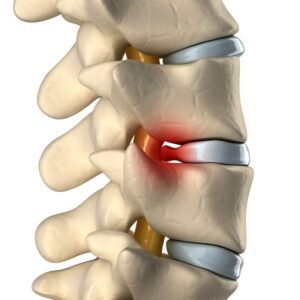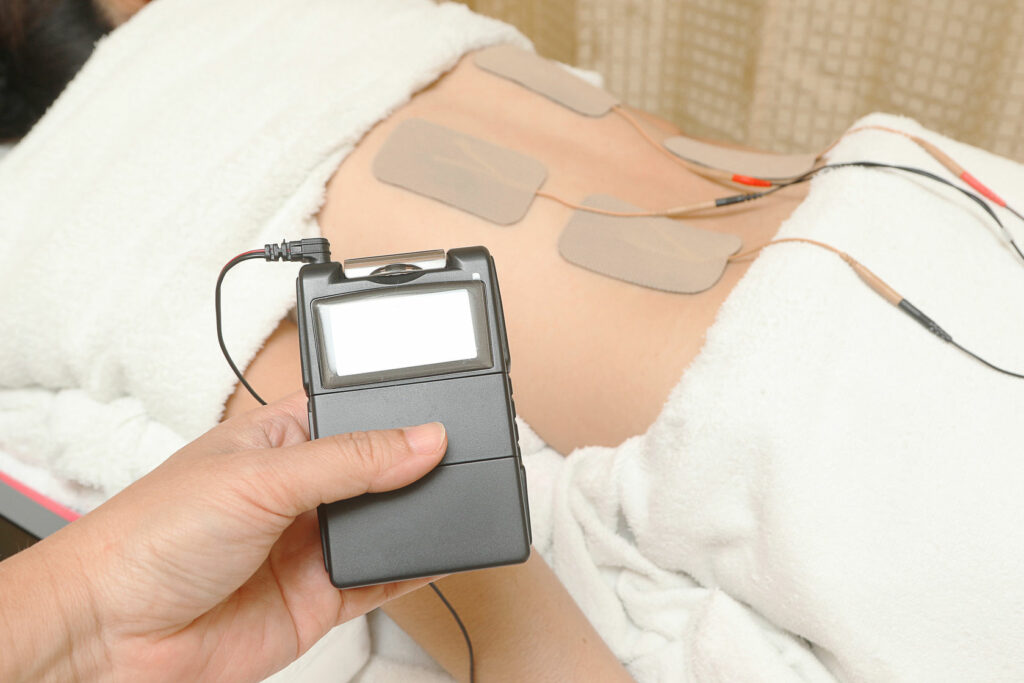Bulging discs are a common problem that can cause significant pain and disability. Physical therapy is an effective treatment for bulging discs and can help relieve pain and improve function.
Physical therapy can help improve the flexibility of the spine and reduce pressure on the disc. It can also help improve the range of motion, strength, and balance. Physical therapy may also involve exercises to reduce friction against the disc, or traction to help remove the pressure from the disc. In this blog, we will discuss the benefits of physical therapy for bulging discs and some tips for selecting a therapist.
Contents
What are Bulging Discs?

Bulging discs are caused by the herniation of bulging disk material through an opening in the annulus fibrosus. This can occur due to several factors, such as age, obesity, genetics, and repetitive movements. Bulging discs can cause extreme pain when they herniate and often result in decreased range of motion and difficulty turning or moving the spine.
Bulging discs are also a common cause of back pain, as they can lead to compression of spinal nerve roots. If left untreated, bulging discs can lead to chronic pain and disability.
The signs of a bulging disc include:
-Sharp, stabbing pain in the back, especially around the lower back, buttocks, and hips
-Numbness or tingling in the lower extremities
-Weakness in the lower extremities
Reasons for a bulging disc include:
-Repetitive strain on the back caused by a job, lifestyle, or injury
-Obesity
-Age
If you are experiencing any of these symptoms, it is important to consult a doctor. A CT scan or MRI may be necessary to determine the extent of the problem. Treatment typically includes injections of corticosteroids and/or spinal fusion surgery.
Physical Therapy For Bulging Discs
Treating bulging discs can involve a combination of different treatments, including physical therapy. Physical therapy may help improve your flexibility, strength, and range of motion, which can help reduce the amount of pressure on the disc. In addition, physical therapy may also help you learn how to use your muscles correctly and increase your endurance.
Using physical therapy to treat bulging discs can be a long and gradual process, and it may take several visits to complete. Your physical therapist may also recommend exercises that you can do at home. If you experience pain or pressure on the disc, please seek medical attention.
If bulging discs are causing significant discomfort, patients may require surgery to remove the disc. In some cases, a fusion procedure may also be recommended as a long-term treatment option.
Types of Physical Therapy For Bulging Discs

There are a few types of physical therapy that may be prescribed for bulging discs, depending on the severity and location of the disc. Oftentimes, physical therapists will recommend exercises specifically designed to stretch and strengthen the surrounding muscles and fascia.
Some of these types of physical therapy that can be prescribed for bulging discs include:
Strengthening Exercises
There are a variety of exercises that can be done to help strengthen the muscles surrounding the discs in the back. These exercises can help to reduce inflammation and pain, and may also help to restore function. Some examples of exercises that may be helpful include:
-The quadriceps stretch: This exercise is performed by kneeling with the feet shoulder-width apart, then lifting the arms towards the sky. Keep the spine straight and extend the hips forward. Hold for 30 seconds.
-The glute bridge: Lie on your back with feet flat on the ground, legs bent at 90 degrees. Drive your heels into the ground, then lift your torso and upper legs off the ground. Extend your hips and press down through your heels to return to starting position. Hold for 30 seconds.
-The abdominal crunch: Lie on your back with knees bent, then place hands behind your head and gently press into the floor. Dig your heels in as you lift your torso off of the floor, then slowly lower yourself back down onto all fours. Repeat 10 times.
Massage Therapy
Massage therapy is a type of physical therapy that uses pressure and massage techniques to treat conditions such as neck pain, headaches, tension headaches, back pain, muscle pain, and arthritis. Also, Massage therapy is effective in treating various conditions because it helps to release tension in the muscles and joints.
Massage is a type of therapy that uses pressure and stroking motions to improve the flow of energy in the body. It has been used for centuries to treat a variety of conditions, including tension headaches, back pain, and neck pain.
Massage therapy can be helpful for people with bulging discs because it helps to relieve pain and inflammation. The pressure and stroking motions also help to restore physical flexibility and balance.
Chiropractic Care
Chiropractic care is a form of alternative medicine that focuses on the treatment of conditions by manipulating the spine. Chiropractors believe that the spine is a communication system between the brain and body, and can be affected by disorders such as headaches, back pain, neck pain, and disc problems. Chiropractic care is often recommended for people who have difficulty dealing with their chronic pain, and it is effective in treating various types of chronic conditions.
Chiropractors use a variety of techniques to treat patients with bulging discs. One common technique is spinal manipulation, which involves adjusting the patient’s spine using gentle movements. This can help relieve pressure on the discs and restore their function. Other methods used by chiropractors include stretches and exercise therapy. Stretching may help to increase flexibility in the muscles surrounding the discs, while exercise may help to improve muscle strength and stability.
Is Physical Therapy For Bulging Discs Beneficial?

There is no one-size-fits-all answer to whether physical therapy is beneficial for people with bulging discs. Some people find it helpful while others don’t see any benefits.
A bulging disc occurs when the annulus, or outer layer of the disc, becomes stretched beyond its normal limit. This can cause pain and pressure in the lower back and neck and can lead to restricted movement.
Physical therapy may help improve symptoms by:
Improving Range of Motion
There are a variety of ways to improve the range of motion (ROM) for people with bulging discs. Some exercises focus on stretching the muscles around the disc, while others use specialized equipment to help the joint move more freely. It’s important to consult with your doctor or physical therapist to find out which exercises are best for you.
The physical therapist will work with the individual to improve the range of motion in specific areas. This can help to reduce the pain and inflammation that may be associated with a bulging disc. Additionally, stretching exercises and spinal mobilization can also be recommended.
Improves Balance
Balance makes it a lot easier to perform everyday activities without pain or discomfort. To improve balance, physical therapists may use specialized machines to help the individual maintain their center of gravity. Additionally, they may recommend exercises that involve coordination and stability such as yoga or tai chi.
Strengthens Core Muscles
The core muscles are important for providing support to the spine and helping to maintain proper posture. Strengthening the core muscles can help reduce pain and pressure on the disc, as well as improve balance and mobility. Physical therapists may use a variety of exercises such as planks, side-bends, or crunches to strengthen the core muscles.
Cons of Physical Therapy For Bulging Discs
There are many cons of physical therapy for bulging discs.
The first is that the treatment may involve a significant amount of pain and discomfort, especially if the patient has a severe disc bulge. Additionally, physical therapy can be expensive, as it typically requires numerous sessions with an experienced practitioner.
Furthermore, depending on the severity of the disc bulge, some patients may not see any reduction in symptoms or progress despite undergoing physical therapy. Finally, there is no guarantee that physical therapy will resolve the issue over time; some cases require more invasive treatments to reduce pain and restore mobility.
Thus, it is important for those considering physical therapy for bulging discs to weigh both the pros and cons before deciding whether this type of treatment is right for them.
How To Take Physical Therapy For Bulging Discs?
Taking physical therapy for bulging discs can be beneficial both in the short and long term. With physical therapy, you can help strengthen your core muscles to better support your back and reduce strain on the disc. You’ll also learn proper postures and techniques to reduce pain.
Some of these steps include:
Step 1
One of the first steps to physical therapy for bulging discs is learning about ergonomics and body mechanics. This will help you understand how to move properly to reduce strain on your back and reduce pain associated with a bulging disc.
Step 2
Your physical therapist may prescribe specific exercises that target core stability, posture correction, flexibility, and balance. These exercises can be done at home or in physical therapy sessions depending on the severity of the bulging disc.
Step 3
You may also be taught relaxation techniques or massage to help relieve discomfort caused by a bulging disc. Massage can help loosen tight areas around where your disc has herniated, which can decrease tension on the disc and alleviate discomfort from nerve compression.
Step 4
Finally, your physical therapist may recommend lifestyle changes such as quitting smoking and maintaining a healthy weight to reduce pressure on the spine. By following these steps, you can benefit from improved strength, mobility, and pain relief from bulging discs.
Conclusion
If you’re suffering from bulging discs, physical therapy may be the answer for you. Physical therapists can help to treat bulging discs by performing exercises that stretch and strengthen the surrounding muscle tissues. This can improve your ability to move your spine and reduce pain and discomfort. If you are considering physical therapy for bulging discs, speak with your doctor to find out if it is a good option for you.
Physical Therapy help patients recover from pain. If you’re experiencing Back pain, Shoulder pain, Knee pain, Neck pain, Elbow pain, Hip pain, or Arthritis pain, a physical therapist at MantraCare can help: Book a physiotherapy session.


